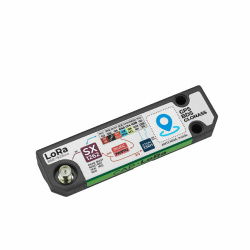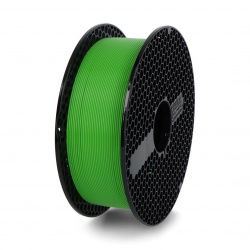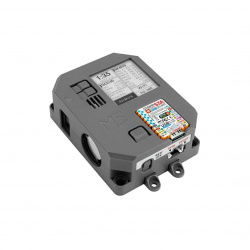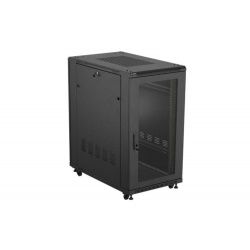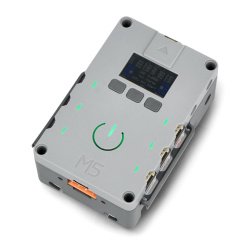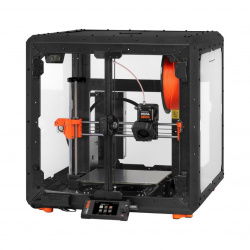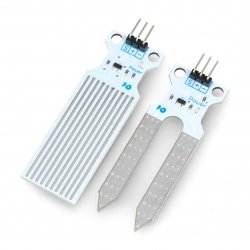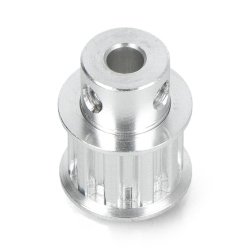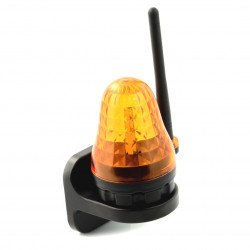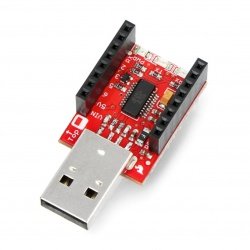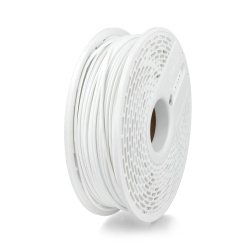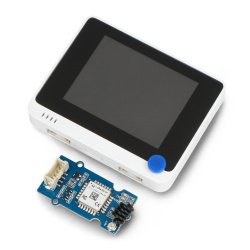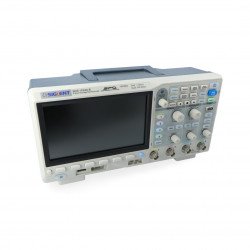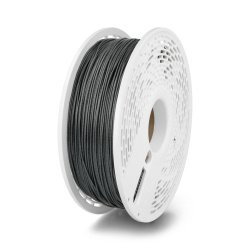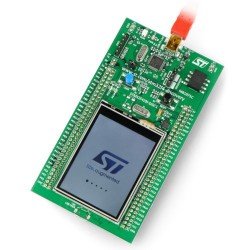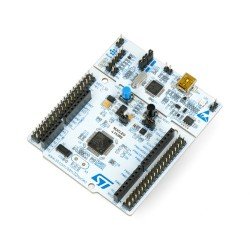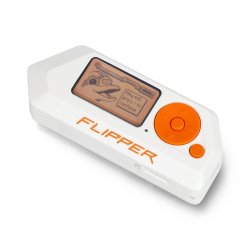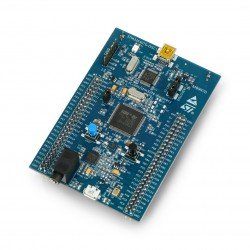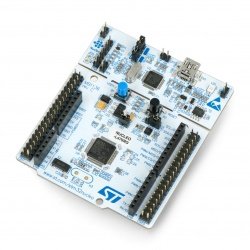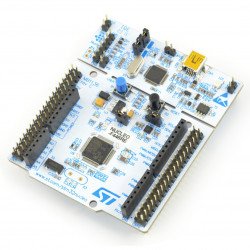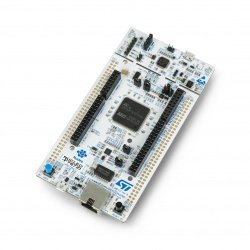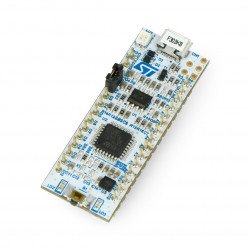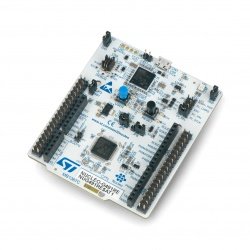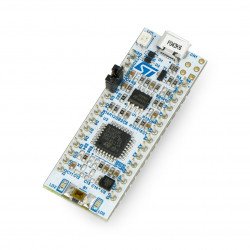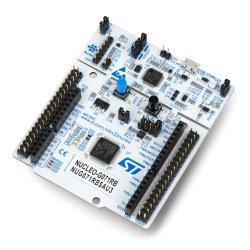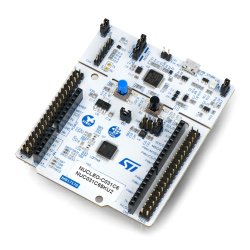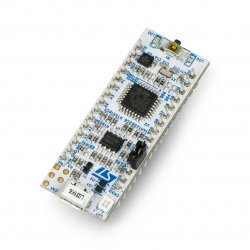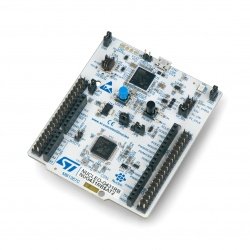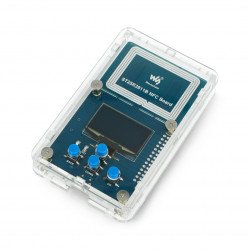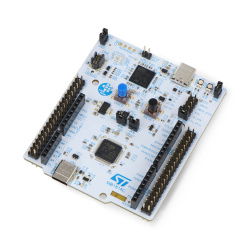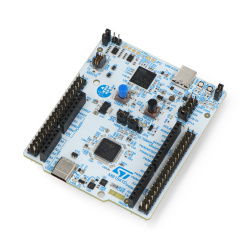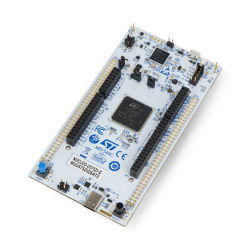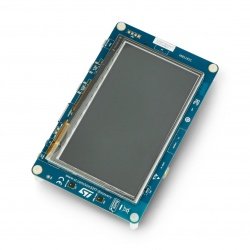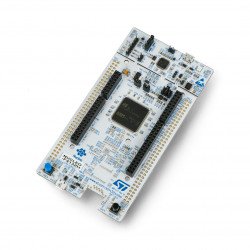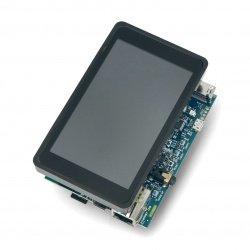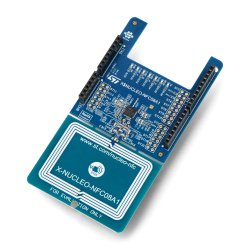There is almost no way to design a user-friendly and modern looking electronic device without use of a microcontroller. Currently there is a lot of MCU families dedicated for various applications. Although for many simple devices 8-bit microcontrollers (such as AVR) or 16-bit MCUs (like PIC or MSP430) are usually sufficient, there is a well-known trend of moving to more advanced processors even when designing less complicated circuits. For example, many ARM Cortex-M3 or ARM Cortex-M0 microcontrollers are enough cheap to use them in cost-sensitive products. STM32 family is one of the most popular series of microcontrollers fitting almost any design needs, from simple consumer devices and gadgets to ultra high performance multimedia and medical applications. In this category you will find many great evaluation boards and modules for development of STM32-based designs. You can choose from wide range of official modules made by ST Microelectronics (Nucleo and Discovery boards) as well as some other brands like DFRobot, Particle, Waveshare or SparkFun.
Flipper Zero - Basic - Bluetooth/RFID/RF/IR/GPIO/1-Wire multi-tool
Flipper Zero is an advanced all-in-one for penetration testers, geeks, ethical hackers and electronic hardware hobbyists . This pocket-sized device combines many tools: RFID,...STM32F407G-DISC1 - Discovery - STM32F4DISCOVERY
The commissioning kit is built on the basis of STM32F407VGT6 microcontroller, it allows you to get to know the systems equipped with the latest Cortex-M4F core from ARM...STM32 NUCLEO-L476RG - with STM32L476RGT6 ARM Cortex M4 MCU
Nucleo module with 32-bit STM32L476RG microcontroller, which is equipped with ARM Cortex M4 core clocked at 80 MHz , 1 MB Flash memory, 128 kB SRAM . Nucleo is...STM32 NUCLEO-F446RE module - STM32F446RE ARM Cortex M4
Module with 32-bit microcontroller with ARM Cortex M4, 180 MHz,512 KB Flash, 128 KB SRAM. Nucleo is compatible with the mbed platform, has connectors for connecting the caps...STM32F411CEU6 - BlackPill v3.1 development board with STM32F411CEU6 microcontroller - WeAct Studio
BlackPill version 3.1 board equipped with STM32F411CEU6 microcontroller , USB type C connector, additional user programmable button, LED, built-in RTC clock, 16-channel A/D...STM32 NUCLEO-F767ZI - STM32F767ZIT6 ARM Cortex M7
Module with 32-bit microcontroller with ARM Cortex-M7, 216 MHz, 2 MB of Flash memory, 512 KB of SRAM. Nucleo is compatible with the mbed platform, has connectors for connecting...STM32 NUCLEO-F303K8 - STM32F303K8 ARM Cortex M4
A small module with 32-bit microcontroller equipped with ARM Cortex M4 core, 72 MHz, 64 kB Flash, 16 kB SRAM. Nucleo is compatible with mbed platform. The pinouts are...STM32 NUCLEO-H755ZI-Q - STM32H755ZIT6 ARM Cortex M7/M4
A module with a 32-bit STM32 microcontroller, which is equipped with an ARM Cortex M7 480 MHz core and an ARM Cortex M4 240 MHz core. It is equipped with 2 MB flash, 864 kB...STM32 NUCLEO-G491RE - STM32G491RE ARM Cortex M4
STM32 Nucleo module with 32-bit STM32G491RE microcontroller equipped with Arm Cortex-M4 core clocked at 170 MHz, 512 kB of Flash memory and 16 kB of SRAM. As the board belongs...STM32 NUCLEO-F042K6 - STM32F042K6 ARM Cortex M0
A small module with a 32-bit microcontroller with ARM Cortex M0, 48 MHz, 32 KB of Flash, 6 KB of SRAM. Nucleo is compatible with the mbed platform. The pins are compatible with...STM32 NUCLEO-G070RB - with MCU STM32G070RB, handles connections Arduino and ST morpho
Nucleo allows you to implement projects based on a powerful microcontroller with a 32-bit ARM Cortex core. The modules are compatible with Arduino overlays. NUCLEO-G070RB has...STM32 NUCLEO-G071RB - STM32G071RB ARM Cortex M0+
Nucleo series development board from STMicroelectronic equipped with a powerful ARM Cortex M0 + STM32G071RBT6 microcontroller in LQFP64 housing, offering 128 KB of Flash...STM32 NUCLEO-C031C6 - STM32C031C6 - ARM CORTEX-M0+
The STM32 Nucleo-C031C6 module with the 32-bit STM32C031C6 microcontroller equipped with the Arm Cortex-M0+ core clocked at up to 48 MHz, 32 kB Flash memory and 12 kB SRAM....STM32 NUCLEO-L031K6 - with STM32L031K6 MCU - compatible with Arduino Nano
Nucleo board with 32-bit ARM Cortex M0+ core clocked at 32 MHz . The Nucleo works with most popular development platforms, which include Keil, IAR, and environments based...STM32 NUCLEO-G431RB - STM32G431RB Arm Cortex M4
STM32 Nucleo module with 32-bit STM32G431RB microcontroller equipped with 170 MHz Arm Cortex-M4 core, 128 kB Flash and 32 kB SRAM. The board is a member of Nucleo-64 family,...NFC development kit - STM32 ST25R3911B - Waveshare 17623
NFC development kit based on STM32 ST25R3911B microcontroller with AT32F413RCT7 driver and OLED display, programmable buttons and popular interfaces . Perfect for...STM32 NUCLEO-H533RE - STM32H533RET6 - ARM Cortex M33
STM32 Nucleo-H533RE is an advanced development board based on the STM32H533RET6 microcontroller. The module equipped with the Arm Cortex M33 core provides extensive...STM32 NUCLEO-U545RE-Q - STM32U545RE ARM Cortex M33
The STM32 Nucleo-U545RE-Q in the LQFP64 package is a versatile development board that facilitates prototyping and testing innovative solutions. It is based on the STM32U545RE...STM32 NUCLEO-U575ZI-Q - STM32U575ZIT6Q ARM Cortex M33
STM32 Nucleo-U575ZI-Q is a versatile development board that allows prototyping and testing new solutions. Based on the STM32U575ZIT6Q with an Arm Cortex M33 core clocked at...STM32F746G-Disco Discovery STM32F746NG - Cortex M7 + touch screen, capacitive 4.3 ''
Starting set STM32F746G Discovery with microcontroller STM32F746NGH6, allows you to acquaint with the systems equipped with powerful Cortex M7 from ARM company. The system has...STM32 NUCLEO-F413ZH - STM32F413ZHT6 ARM Cortex M4
Module with 32-bit microcontroller with ARM Cortex M4, 100 MHz, 1.5 MB of Flash, 320 KB of SRAM. Nucleo is compatible with the mbed platform, it has connectors for connecting...STM32MP157F-DK2 Discovery - STM32MP157FAC1 + touchscreen 4"
Startup kit based on STM32MP157FAC1 microcontroller (Cortex-A7 800 MHz 32-bit + Cortex-M4 209 MHz 32-bit). Among other things, the board has a built-in 4" touchscreen...Motor driver expansion board X-NUCLEO-IHM08M1 for STM32 Nucleo
Expander, X-NUCLEO-IHM08M1 extension board for STM32 Nucleo with a built-in STL220N6F7 controller to control a brushless DC three-phase motor.X-NUCLEO-NFC08A1 - NFC Tag - expansion board for STM32 Nucleo
X-NUCLEO-NFC08A1 NFC tag reader in the form of an overlay for STM32 Nucleo modules. The board was based on the ST25R3916B system and configured to support ISO14443A/B,...See also
STM32 – a wealth of peripherals and enormous computing power
STM32 microcontrollers use 32-bit ARM cores. The first family of these processors introduced to the market - STM32F1 - is based on the ARM Cortex-M3 architecture, the subsequent ones - on newer cores, e.g. ARM Cortex-M4 or M0 and M0+. The most modern systems from the STM32F7 family are based on the ARM Cortex-M7 core, which is currently one of the most efficient and technically advanced architectures used in microcontrollers. STM32 systems offer a wide selection of analog peripherals, including fast ADCs with 12-bit resolution and sampling rates of 1 Msps or more, DACs (also 12-bit) and fast hardware comparators. Digital peripherals include, for example, extremely flexible (and numerous!) hardware timers, a rich set of communication interfaces (USART, UART, SPI, I2C, I2S, CAN, USB - including OTG - or Ethernet). Universal blocks of memory controllers, DMA, clock and reset control (RCC) and system clock monitoring (CSS) systems, as well as advanced LCD and camera controllers and graphics accelerators are invaluable.
STM32 housings and memories – there are plenty to choose from!
A particularly important advantage of the STM32 family is the richness of both housings and built-in Flash and RAM memories. Some groups (e.g. STM32F0) offer tiny, 20-pin TSSOP20 or WLCSP25 housings, but the most popular are the LQFP32, LFQP48, LFQP64 and LFQP100 housings - these are available in virtually all product lines of the STM32 family. The most complex systems - in particular those belonging to the STM32F4 and STM32F7 families - are also available in LQFP144, 176 or 208 housings, as well as UFBGA and TFBGA. Even microcontrollers from the same series and in the same housing can usually be purchased in several variants, differing in the amount of memory (Flash, RAM) and - of course - price.
STM32 microcontrollers available at the Botland store
In this category you will find several very popular models of STM32 microcontrollers, eagerly used both in evaluation boards and in end devices, mass-produced by many companies. Our offer includes immediately available microcontrollers from the STM32F1 family, belonging to various subgroups of this series: F100 and F103, equipped with large amounts of Flash memory (from 16, through 64 to 128 kB) and RAM (4, 8 or 20 kB) . We chose versions in two of the most commonly used housings: LQFP48 and LQFP64. It is worth knowing that in other categories of our store you will also find programmers/debuggers dedicated to STM32, evaluation boards and books that will allow you to quickly start your adventure with these excellent systems.
STM32 microcontrollers - FAQ
STM32 is a family of 32-bit microcontrollers based on the Arm Cortex-M processor. It offers high performance, real-time capabilities, digital signal processing, low power/low voltage operation and connectivity. It maintains compatibility and ease of design.
The question of choice is most often a question of which STM32 to start with. We definitely recommend FORBOT sets and courses, including a set for the STM32L4 course with the NUCLEO-L476RG board, a traditional 490-page book edition of the STM32L4 course and invaluable electronic boards for the STM32L4 course .
Before you actually use a specific microcontroller in your project, you should at least look at its data sheet. The next step is to choose a programming language - the STM32 courses mentioned above are based on STM32CubeIDE, but an equally good option is the C language.
Learn something about C. For many reasons, the vast majority of embedded systems are designed with C as their primary language. Then learn the basics of electronics , get your first STM32 hardware and finally choose a microcontroller and a toolkit or, if you prefer, an STM32 course that will take you through the initial stages of learning.































































































































































































































































































































